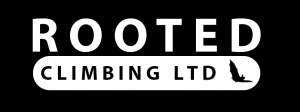Bat Surveys – Aerial PRF Inspections
The advent of the 2023 BCT Bat Survey Guidelines has accelerated the recognition among ecological consultants that using a bat licensed tree climber to undertake an aerial PRF inspection survey (tree climb bat survey) stands as the most accurate and cost-effective method to survey trees for evidence of roosting bats. While emergence and re-entry surveys maintain their importance in scenarios where accessing a tree with a rope poses a danger, these methods tend to yield less accurate results compared to a survey that involves a bat licensed tree climbing ecologist conducting a thorough examination of each PRF with an endoscopic camera.
Ground-based surveys, on one hand, often overlook hidden PRFs visible only from an aerial perspective. A study on tree roosts occupied by radio-tagged bats by Davidson Watts (pers. Comm., 2021) highlighted this issue, revealing that observers missed the feature from the ground level in 26% of the cases. Conversely, ground observations frequently misidentify features as having a higher potential to host a bat roost than they actually do, leading to unnecessary survey efforts when relying solely on ground-based surveys.
To address these challenges, a combination of techniques ensures the safe and efficient survey of trees for evidence of roosting bats. Initially, a drone examination of PRFs from a close range allows for the determination of their suitability to host a bat roost without the need for climbing. Upon identifying a potentially suitable PRF, climbing the tree with ropes and a harness enables a bat licensed ecologist to conduct an exhaustive PRF inspection survey using a torch and an endoscopic camera.
For ecological consultancies seeking a bat licensed tree climber to carry out an aerial PRF inspection survey, we invite you to contact us using the details below.



